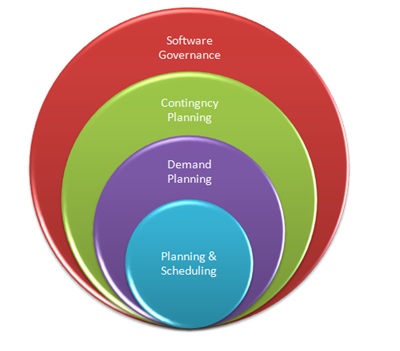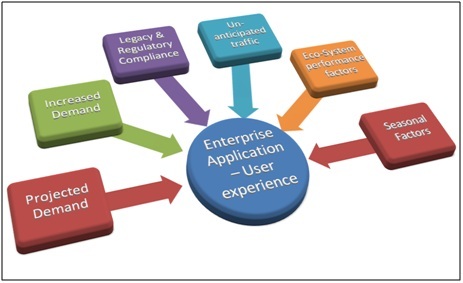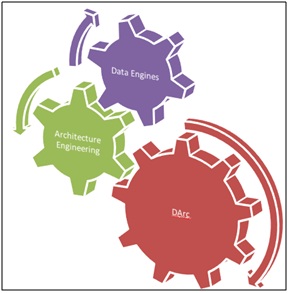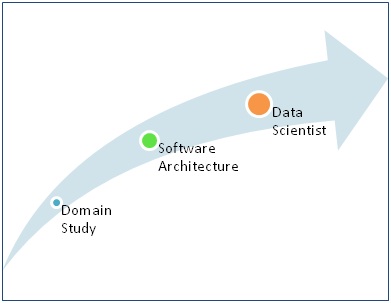Traditional software architecture involves identifying right mix of technologies to deliver most appropriate IT solutions to the business needs. Software Architects, by training and profession, analyze inter-play of various software components and solution such a way that the performance of overall enterprise software meets demand and business needs. The Technological know-how and experience are core competencies that help Software Architects to deliver time-proven software solutions. With the emergence of data intelligence, now, Software architects have one more proven industry methodology to deliver effective enterprise solutions - Murai Data Analytics ©, shortly MDat.
MDAT is a pioneer software data intelligence tool that helps in developing effective software solutions. MDAT uses linear data analysis to identify the software architectural components that can be improved, re-engineered, so that the components play an effective integral role in delivering optimal enterprise software performance. MDAT helps organizations achieve huge return on IT investments by providing effective solutions to Planning & Scheduling, Demand Planning, Contingency Planning and Software Governance demands.
MDAT is a pioneer software data intelligence tool that helps in developing effective software solutions. MDAT uses linear data analysis to identify the software architectural components that can be improved, re-engineered, so that the components play an effective integral role in delivering optimal enterprise software performance. MDAT helps organizations achieve huge return on IT investments by providing effective solutions to Planning & Scheduling, Demand Planning, Contingency Planning and Software Governance demands.

In traditional Enterprise Software Deployments, IT Teams put together efforts in building deployment profiles that meet the expected user and system demands. The deployed profile, with contingency built-in, would meet the user demand. As the application reaches a wider adaption, increases customer participation, it is imperative that the IT team would re-visit the deployed profile either to fine-tune the system, provided original profile has capacity, or re-built a new deployment profile for the increased customer base. This process of meeting demand would present itself to the IT teams if the business out-grows the expected planned capacity of the enterprise system.

The process of meeting demand would become multi-fold if the IT teams would have to support newer version of the IT applications that are deployed in the field. Importantly, if the applications are approved by regulatory bodies, for instance health-care related applications that are blessed by FDA, the mandatory compliance of preserving legacy versions impose a huge business demand on the IT teams.
Using MDAT, IT Teams can develop demand forecasting models. The Demand models provide salient IT Deployment's pointers such as break-even demand point, performance eco-zone and IT system optimal operating profile. Through Demand Models, IT Teams can gauge the performance footprint of a new IT deployment that has undergone changes to architecture, hardware, and / or environment.
Second, for corporations the consistent and reliable presence on the internet has become a defacto standard in promoting brand image. IT teams should make sure that the enterprise software application is up and running under any circumstance. Lack of consistent Internet presence tarnishes the reputation of an organization and dents both Internet and brick& mortar presence. Given such a high business criticality, the IT teams should be cognizant and should make sure to withstand against risk factors to their web presence. For instance, the risk factors may emit from either cyber or viral attacks on the enterprise application - you may recall the recent cyber attacks that put electronic mammoth in a bad spot. In order to withstand such un-anticipated cyber attacks, the enterprise software system not only is equipped with state of art secure infrastructure but also employ adaptable data processing algorithms to dynamically scale the platform infrastructure on demand basis. For this, the organizations should embark on data intelligence as first lane of defense.

Using MDAT, IT Teams can model risk factors that affect the performance and take steps to mitigate performance hindrance factors.
Next, in the multi-tiered enterprise application deployment, the challenge to meet the user demand not only originates from increased business growth, a good to have problem, but also from the lack of performance of other tiers in the technology stack. Since the enterprise application is brand image of the corporation, any dissatisfaction pertaining to Web experience may result into questionable customer service experience for future purchases. The corporations could address this issue by applying data intelligence to the interactions among different tiers of the enterprise technology stack. Through effective data intelligence process, a sub-optimal performance of one stack could be mitigated through turbo performance of other elements in the stack. For instance, if the network tier is performing at sub-optimal level, for effective user experience, the improved performance of enterprise application, faster crunching, acts as deterrence to the slowdown of the entire application. Data Intelligence act as a catalyst process in this pursuit and enhances the Web tier by pooling components that improve Web tier performance.
Finally, seasonal factors, popular live network events or drastic increase in downloads of popular website would indirectly impose performance constraints to the enterprise applications. Having a through and data intelligence capability will help organizations to better plan for such un-expected events.
MDAT provides performance points of each tier in the Web deployment. That is, throughput of network, enterprise container response and database response. Through performance points optimization, IT Teams could improve the performance by adding hardware or other processing resources.
Given the asymmetric nature of above challenges, the IT enterprise architects need frameworks that both uses traditional and ground breaking techniques. The Traditional software architecture addresses some of these performances challenges very effectively but completely paralyzed by the other asymmetric aspects. This is where Data Intelligence is a handy tool for the enterprise software architects.

To develop data mined frameworks that one hundred percent engineer software architecture and that provide predictive & behavioral profile (mathematical equations) to the software deployment. Through this, IT teams could prepare a) effective demand planning, b) contingency planning, c) Software Governance and d) future deployment profiles. With the help of our data modeling, IT teams could improve return on IT Assets and effectively plan for future IT purchases. In addition, the data modeling would help IT personnel to calculate the break-even factors for the software deployment.
We achieve this by employing Software Architects and Data Scientists to work closely with the IT teams.
